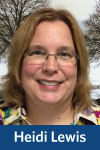Because my brother had previously lived in the Seattle area for many years, I asked him about what to expect during my visit to Bellevue. Without a hint of hesitation, he stated that it would be 47 degrees and misty for the entire time. Upon my arrival, that was indeed the case, but unlike his prediction, it didn’t last for long. By midafternoon the sun crept out and did not shy away for the rest of my visit.
During the morning of the Northwest Association for Biomedical Research (NWABR) Regional Institutional Animal Care and Use Committee (IACUC) Conference, I attended an intriguing session on the topic of compassion fatigue. Having worked in private veterinary practice and being a family caregiver for a number of years, I felt quite familiar with this topic. After joining the field of animal research, I became reacquainted with it from a new perspective. As a vet tech/training coordinator, and later as a facility supervisor, it was often a subject of discussion with research students and the animal care teams.
Before the session, I initially thought that I didn’t need to worry about compassion fatigue on the job anymore. Since becoming an IACUC coordinator, I no longer work directly with animals. How could this still be affecting me? As was outlined at the session, indeed, IACUC administrators, coordinators, and members can and do suffer from compassion fatigue. We review and discuss protocols that force us to evaluate the harm vs. benefit of animal studies. In addition, we interact with the research, veterinary, and animal care personnel who work directly with these very same animals.
How can an individual recognize compassion fatigue in themselves or others? This question was posed to the various groups in the room. Our group was composed of two veterinarians and two IACUC coordinators with vet tech backgrounds. While we acknowledged similar emotional tolls in our work roles, we shared different methods of coping, such as having a dedicated seating area for reflection and a memorial plaque. On a deeper personal level, we also shared some of our religious observances, along with the importance of seeking support from others and the comfort our own pets can provide.
Since the sun’s appearance coincided so well with my visit to the Pacific Northwest, there were stunning views of the snow-capped mountains surrounding the area. In particular, to the southeast, Mount Rainier, with an elevation of 14,411 feet, provided the opportunity for some astounding photographs. Perhaps the next time I begin to recognize symptoms of compassion fatigue, I can find some comfort by looking at those photos. Wherever you are, and however you choose to cope, I hope you also find your own peace when confronted with compassion fatigue.
Heidi Lewis, RVT, RLATG is the IACUC compliance coordinator in the Office of Research Integrity at the University of Kansas, and a member of PRIM&R’s Blog Squad.


That was a nice article Heidi, thanks!